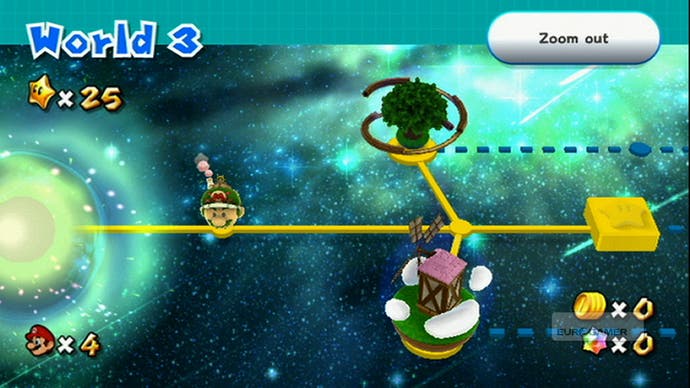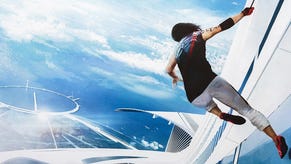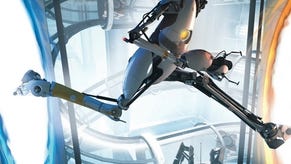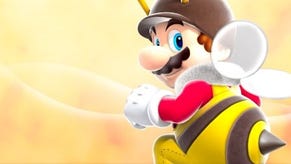Super Mario Galaxy 2
Sun over guns.
Straight off the bat, soon as I'm seated in Nintendo's cosy demo room, I'm told that Mario Galaxy 2 is largely comprised of ideas 'left over' from the first game. Concepts and quirks which just couldn't be squeezed into the original Galaxy's cavalcade of moons and planetoids.
For nearly any other series it would be a resignation, an admittal that this is a B-side, destined to dwell in the shadow of its elder sibling. But when it comes to Nintendo's flagship character it's a cause for celebration - a chance to take another peek inside the ideas factory which produced the wonderful charm and variety of Super Mario Galaxy 1.
Pretty soon, I'm immersed in a chunky, primary coloured-world which delights and surprises at almost every turn. These are not what you could ever call leftovers in any ordinary sense; here are ideas which would keep other series running into double figures, casually tossed into the digital ether like bright confetti.
It all starts on a space ship. This time, instead of leeching a ride from Princess Rosalina, Mario has his very own galactic craft, ingeniously codenamed Starship Mario. Which, because it's a little planetoid complete with atmosphere and foliage, looks more like Luigi. Nevertheless it makes for a snazzy place to rest up between excursions into the cosmos, gradually becoming populated with various members of the extended Mario roster as you explore the universe and meet them.

Bumbling around on this most egocentric of spaceships serves as a quick reminder of Galaxy's system of gravity and perspective. This gives me a chance to reacquaint myself with the basic spin and ground pound attacks as I terrorise the glutinously chipper Toads dotted around the surface. Then I'm whisked off to one of SMG 2's early levels, a gentle learning curve galaxy known as Puzzle Plank.
Puzzle Plank is what would happen if you crashed an Early Learning Centre into a B&Q in space. It's full of brightly coloured wooden blocks, ground-poundable pegs and swishing buzzsaws - these chop away sections of the platforms, dropping you into the void. Fittingly, it's a slightly slower-paced area, asking a few questions of the old head muscle. In one instance those poundable pegs protruded from both sides of a surface, creating adjustable platforms which had to be stomped appropriately to reach the teleporting star for the next area. Towards the end, a familiar nemesis made a fresh appearance: say hello once again to the sliding block puzzle.
Normally even the suggestion of one of these frustrating toys is enough to get me stropping in a corner, but the wonderfully tactile, 3D approach which Nintendo has taken had me beaming. Instead of a flat set of tiles which have to be shuffled endlessly around to reveal a picture of something inane like a ballerina poodle playing a trumpet, Galaxy's sliding blocks are floating in the azure, with pounding points indicated on the outside edge. Pound these in the correct order and the whole thing slips satisfyingly into shape. It's as innovative and tactile a solution to an old problem as you might ever need.








